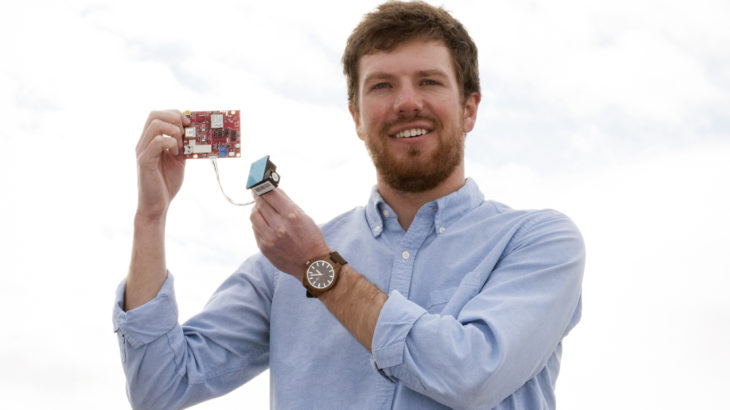Jonathan Whitaker will have a sigh of relief for more reasons than graduating in 2017. An undergraduate in computer engineering, he and a team of electrical and chemical engineers developed a low-cost air quality sensing platform that will be distributed to 150 schools across the Salt Lake Valley, with manufacture-ready plans for mass production.
Just how low-cost are these air sensor devices?
“To put it into perspective, our government monitors that gauge air quality can be upwards of $30,000 apiece,” said Whitaker. “These devices are $150 apiece, and they tend to consistently track air quality trends with these higher quality government monitoring systems.”
“Data from these devices scales really large really fast,” he added. “The larger the sensor network, the more representative our air quality data will be in more local regions.”
Utah homeowners have already benefitted from this technology, which has piqued interest during Utah’s seasonal winter inversion months.
“A lot of people don’t realize that the indoor air quality in their homes (winter or summer) can be worse than the outdoor air quality, even on a bad air day, he said.”
A big goal of the project is to create a diverse sensor network across the Wasatch Front. Under the mentorship and advocacy of Kerry Kelly, a professor of chemical engineering, and keen design-thinking mentorship from electrical engineering graduate student Ahn Luong, Whitaker’s research group received over $1 million in resources, funded in part by the National Science Foundation.
More articles like this in ‘Student Innovation @ the U!’
Find this article and a lot more in the 2017 “Student Innovation @ the U” report. The publication is presented by the Lassonde Entrepreneur Institute to celebrate student innovators, change-makers and entrepreneurs.




